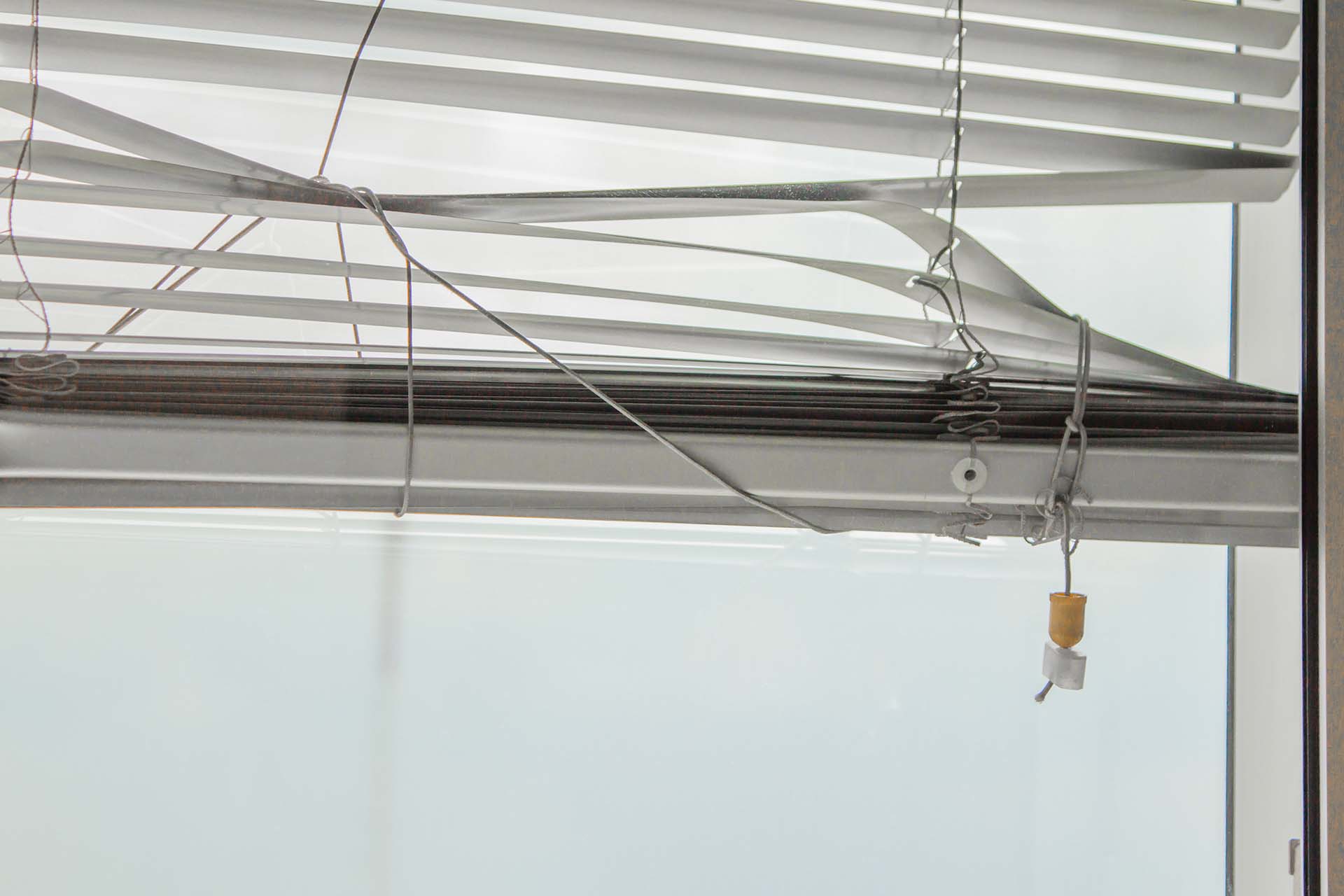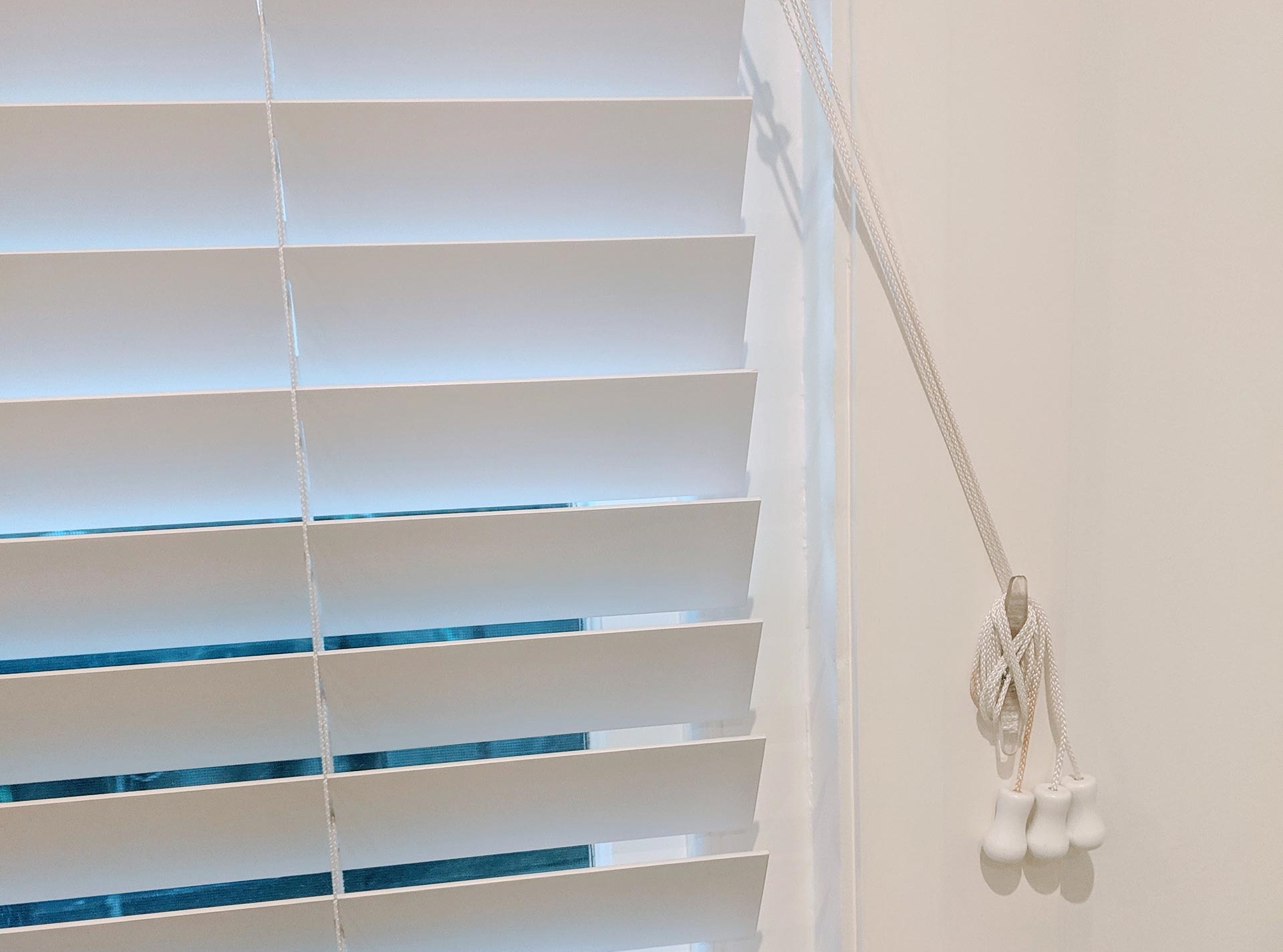

Articles
How To Lower Blinds Without A String
Modified: February 25, 2024
Discover effective methods for lowering blinds without a string in this informative articles. Say goodbye to tangled cords and simplify your window treatments today!
(Many of the links in this article redirect to a specific reviewed product. Your purchase of these products through affiliate links helps to generate commission for Storables.com, at no extra cost. Learn more)
Introduction
Blinds are a popular window treatment option in many homes and offices. They offer privacy, control over natural light, and can enhance the overall aesthetics of a room. Traditional blinds typically come with a string or cord that is used to raise and lower them. However, if you’re looking for alternative ways to lower your blinds without a string, you’re in luck!
In this article, we will explore five different methods that you can use to lower your blinds without the need for a string. Whether you want a more modern and convenient option or need a solution for blinds that have broken strings, we’ve got you covered. Let’s dive in!
Key Takeaways:
- Say goodbye to traditional string-controlled blinds! Explore modern options like cordless lift systems, motorized blinds, and DIY retrofitting for a sleek, convenient, and stylish window treatment solution.
- Embrace the future of window treatments with remote-controlled blinds, smart home integration, and cordless lift systems. Enjoy hassle-free operation and a clutter-free look with these innovative alternatives to traditional blinds.
Read more: How To Lower Window Blinds Without Strings
Method 1: Using a Wand or Rod
One common alternative to lowering blinds without a string is by using a wand or rod. This method is often used with blinds that have a tilt mechanism. Here’s how you can do it:
- Check if your blinds have a wand or rod attachment. This is usually a long, slender object that you can use to control the blinds’ tilt function.
- Locate the wand or rod, usually on the same side as the tilt mechanism. It may be attached directly to the blinds or have a separate attachment point.
- Gently grasp the wand or rod and rotate it in one direction to tilt the blinds open. Rotate it in the opposite direction to tilt the blinds closed.
- If your blinds have a lift mechanism in addition to the tilt feature, you can also use the wand or rod to raise or lower the blinds. Simply rotate the wand or rod in a continuous motion to raise or lower the blinds gradually.
Using a wand or rod provides a sleek, cordless alternative to traditional string-controlled blinds. It offers a convenient and easy-to-use method for adjusting the tilt and lift functions of the blinds. Keep in mind that not all blinds may have a wand or rod attachment. So, if your blinds don’t have this feature, don’t worry – there are other methods you can try!
Method 2: Utilizing a Cordless Blinds Lift System
If you prefer a more modern and automated solution, you can utilize a cordless blinds lift system. This method eliminates the need for a string altogether and allows you to raise and lower your blinds with ease. Here’s how it works:
- Research and purchase a cordless blinds lift system that is compatible with your existing blinds or consider buying new blinds that come with this feature.
- Follow the manufacturer’s instructions to install the cordless lift system. This typically involves removing the old lift mechanism and attaching the new one.
- Once the lift system is installed, you can easily raise or lower the blinds by using a control device provided by the system. This can be a remote control, a wall-mounted switch, or even a smartphone app in some cases.
- The cordless lift system operates using motors and receives signals from the control device to adjust the blinds’ height accordingly.
Using a cordless blinds lift system offers the convenience of remote control or automation, making it a great option for those who want a hands-free operation. It also eliminates the need for cords or strings, providing a sleek and clutter-free appearance. However, the installation of a cordless lift system may require some technical knowledge or assistance. Make sure to follow the instructions carefully or seek professional help if needed.
Before purchasing a cordless lift system, it’s worth noting that this method may not be compatible with all types of blinds. Ensure that the system you choose is designed for your specific blinds and meets your requirements.
Method 3: Installing Motorized or Smart Blinds
If you’re looking for a more advanced and convenient option, installing motorized or smart blinds can be a game-changer. This method allows you to lower and raise your blinds using a remote control, a wall switch, or even through voice commands if you opt for smart blinds. Here’s how you can go about it:
- Research and purchase motorized or smart blinds that suit your needs and preferences. Ensure that they are compatible with your existing windows or consider replacing them if needed.
- Follow the manufacturer’s instructions to install the motorized or smart blinds. Depending on the type you choose, this may involve mounting the blinds, connecting them to a power source, and setting up the control mechanism.
- Once the blinds are installed, you can effortlessly lower or raise them using the provided remote control, wall switch, or smart home integration.
- If you opt for smart blinds, you can connect them to a smart home system, such as Amazon Alexa or Google Home, and control them through voice commands or smartphone apps.
Motorized or smart blinds offer the utmost convenience and can enhance the overall automation of your home. They eliminate the need for manual adjustments and provide precise control over the blinds’ movement. However, keep in mind that installing motorized or smart blinds may require some technical knowledge or professional assistance, especially when dealing with electrical connections.
Prior to purchasing motorized or smart blinds, consider factors such as power source requirements, compatibility with your existing smart home system, and the additional features that come with the blinds, such as scheduling or integration with other smart devices.
Look for blinds with a cordless or motorized option for easy lowering without a string. These options provide a sleek and modern look while also eliminating the need for a string.
Method 4: Retrofitting Blinds with a Tilt-only Function
If you already have blinds with a lifting mechanism but want to eliminate the need for a string, one option is to retrofit them with a tilt-only function. This method allows you to control the tilt of the blinds without the use of a string. Here’s how you can do it:
- Research and purchase a retrofit kit designed for adding a tilt-only function to existing blinds. Make sure to choose a kit that is compatible with your specific blinds.
- Remove the lifting mechanism of your blinds. This typically involves detaching the cords or strings and disconnecting any components related to the lifting mechanism.
- Follow the manufacturer’s instructions to install the tilt-only retrofit kit. This process may involve attaching a new control device and making adjustments to ensure the blinds tilt smoothly.
- Once the retrofit is complete, you can use the new control device to adjust the tilt of your blinds, raising or lowering them to your desired position.
Retrofitting blinds with a tilt-only function allows you to control the light and privacy levels of your room without the need for a string. It provides a clean and simplified look while retaining the functionality of the blinds. Keep in mind that retrofitting blinds may require some technical skills and careful attention to detail. If you are unsure or uncomfortable with the process, it’s best to seek professional assistance.
Before purchasing a retrofit kit, ensure that it is compatible with your specific blinds and meets your requirements. Pay attention to the installation instructions and consider your comfort level and skills when determining if this method is suitable for you.
Read more: How Do You Lower Blinds With A String
Method 5: Adding a Spring-Assist Mechanism
If you have blinds without a string and want a simple yet effective way to lower them, adding a spring-assist mechanism can be a great solution. This method involves retrofitting your blinds with a spring system that allows for easy lowering and raising. Here’s how to do it:
- Research and purchase a spring-assist mechanism kit that is compatible with your blinds. Look for kits specifically designed for your blind type and size.
- Remove the existing lifting mechanism from your blinds. This may involve detaching any cords or strings and disconnecting any components related to the old mechanism.
- Follow the manufacturer’s instructions to install the spring-assist mechanism. This generally involves attaching the provided components, such as a spring and brackets, to the blinds.
- Once the spring-assist mechanism is installed, test the blinds by gently pulling down on them. The spring should engage and allow the blinds to lower smoothly.
- To raise the blinds, simply pull them up until the spring is fully compressed. The blinds will stay in place until released.
Adding a spring-assist mechanism to your blinds provides a user-friendly and efficient way to lower and raise them without the need for a string or cord. It offers a smooth and controlled movement while maintaining a clean and minimalist look in your space. However, keep in mind that retrofitting blinds with a spring-assist mechanism may require some technical skills and attention to detail. If you’re uncertain or uncomfortable with the process, it’s advisable to seek professional assistance.
Before purchasing a spring-assist mechanism kit, ensure that it is compatible with your blinds and meets your specific requirements. Consider factors such as the weight of your blinds and the ease of installation when choosing the right kit for your needs.
Conclusion
Lowering blinds without a string is not only possible but also offers a variety of convenient and stylish options. Whether you choose to use a wand or rod, install a cordless lift system, opt for motorized or smart blinds, retrofit your blinds with a tilt-only function, or add a spring-assist mechanism, there is a method that suits your needs.
Using a wand or rod provides a simple and manual way to control the tilt and lift functions of your blinds. It offers a cordless alternative and is commonly found in blinds with a tilt mechanism.
A cordless lift system allows for easy and automated control of your blinds. It eliminates the need for strings and provides effortless raising and lowering, making it a great option for those seeking convenience.
Motorized or smart blinds take things a step further by offering remote control, wall switch operation, or even integration with smart home systems. This method provides maximum automation and convenience, allowing you to control your blinds with just a click or a voice command.
Retrofitting blinds with a tilt-only function is an ideal solution for those who already have blinds with a lifting mechanism. It provides a simple way to control the tilt without the need for strings, offering a streamlined and functional option.
For those who prefer a DIY approach, adding a spring-assist mechanism to existing blinds is a cost-effective and practical option. It allows for easy lowering and raising of the blinds, providing a smooth and hassle-free operation.
When deciding on the best method for lowering blinds without a string, consider factors such as your preferences, the type of blinds you have, and any technical skills or assistance required for installation. Remember to always follow the manufacturer’s instructions and, if necessary, seek professional help to ensure a successful and safe implementation.
With these alternative methods, you can enjoy the benefits of blinds without the inconvenience of a string. Choose the method that suits your needs and transform your windows into functional and stylish focal points in your space.
Frequently Asked Questions about How To Lower Blinds Without A String
Was this page helpful?
At Storables.com, we guarantee accurate and reliable information. Our content, validated by Expert Board Contributors, is crafted following stringent Editorial Policies. We're committed to providing you with well-researched, expert-backed insights for all your informational needs.















0 thoughts on “How To Lower Blinds Without A String”